Documentary Storyboard/Outline~
Subjects to be covered in the narration:
- What is a blood glucose monitor and why do we need it?
a) In the modern era, someone who has issues with blood glucose levels (like a diabetic) would use a lancet needle) to poke their finger tip and place the droplet of blood onto a test strip that is placed inside of the blood glucose monitor. The monitor would then analyze the glucose levels in the blood and give a reading in about three seconds. This has not always been the means of monitoring glucose levels.
b) Mentions of diabetes mellitus can be traced back to ancient civilizations and urinalysis is seen in the medical community before the 17th century. Urinalysis, during this time, comprised of utilizing the five senses to analyze the sugars in urine, making it a highly subjective and unreliable form of testing. It would not be until the early 1880s that a more professional tool would be invented with George Oliver’s test strips for urinalysis. In 1908, a copper reagent was formulated and would test glucose levels without changing the composition of glucose: giving the most accurate reading yet. The issue with urinalysis was that it was a lengthy process, typically done in hospitals or doctor offices which made it inaccessible for daily use. Daily monitoring of blood sugar levels is a key process in managing and treating diabetes as it is the determining factor in administering insulin and changing dietary patterns.
2. Who is Anton Clemens?
a. Prior to Clemens, the Ames Laboratory released a new paper testing strip called Dextrostix that would change color once the blood droplet was placed onto it. While it was easier to use than a urinalysis approach, it was subjective and inaccessible to some patients as it relied on the ability to see the minute color differences between the test strip and the color coordinating chart. If a patient was color blind, or any other form of vision impaired, the Dextrostix testing format would be impossible to use.
b. Clemens worked at Ames laboratory in the 1960s and 1970s and created the Ames Reflectance Meter. Clemens realized the importance of making blood glucose testing more available and was quoted to say:
“[. . .] it doesn’t make any sense whatsoever to take a blood sample to a lab and then have an answer at best in 3-4 hours after and then make any judgment on the diabetes management on the basis of that. I said that if so if it has any merit it should be done on the spot and at the site of the individual [. . .]” (Mendosa, 1999).
While the Ames laboratory were not the first to utilize blood as an instrument in monitoring glucose levels, they were the first to make it readily available to hospitals. The Ames Reflectance Meter worked by having a blood droplet placed onto the strip and after about a minute, the needle would move and indict the glucose levels.
3. The Ames Reflectance Meter and its impacts
a. With the creation of the Ames Reflectance Meter, not only was blood glucose testing made available through the mobility of the device but also through the process of testing the sugar. The meter does not depend on color charts, but instead a straightforward needle arrow that gives a number reading on the screen, like an old analog weight scale.
b. The easy and availability of testing blood sugar levels through glucose analysis meant that more power was given to the patients. They no longer had to sit in doctors’ offices or hospitals to get their blood drawn and then another three hours to get the results: the results were instantaneous. While the Ames Reflectance Meter was generally used in hospitals by physicians, it marked the pathway for at-home blood testing.
c. With the availability of blood glucose testing, patients were able to maintain a stricter journal of variances in blood sugar levels. This has led to an overall grander understanding of diabetes, but also on an individual basis what decisions and events impact readings. Prior to the invention in 1970, many diabetes self-help books seldom mentioned testing blood sugar levels but after its addition to the market, diabetes literature greatly recommended a close monitoring of blood sugar levels through these devices.
4. Insert interview with Clemen’s “assistant” (see below)
5. Modern day uses
a. Today, there are shelves full of over-the-counter blood glucose meters that are progressively getting smaller and more discreet. The Ames Laboratory, which has gone through many names, still makes blood glucose monitors today and it the only blood monitor sold at a drugstore to have passed the Diabetes Technology Society’s Blood Glucose Monitor System (BGMS) Surveillance Program in 2017 with 100% accuracy. (diaTribe Learn, 2017).
6. Future projections/worldwide need
a. Diabetes is a dietary based disease and it is currently the seventh leading cause of Americans’ deaths. With the invention of the Ames Reflectance Meter, the floodgates of innovation and funding focused on more accurate testing of blood sugar has led to a better understanding of diabetes and other blood glucose sensitive diseases.
b. As the medical community shifted from urinalysis to blood in the mid-20th century, there grew more of a concern about invasive testing and a movement towards finding a non-invasive testing method came about. Everytime a patient goes to check their blood, they have to poke their fingers with a needle which sounds inconsequential to someone who does not have to jab their fingers at least three times a day to test their blood. Some non-invasive testing methods that have come out with more recent scientific studies include implanting glucose monitors. Without the original invention by Clemens, none of the modern day breakthroughs about diabetes as a disease or blood glucose monitoring would be possible.
Interview with Clemens’ “assistant”
Characters:
- Interviewers; Emma and Kim.
- Clemens ‘assistant’/’intern’; Zachary. Worked for Clemens while he was working in the Ames Lab.
- We decided to write an interview with an assistant/intern because it gave us more of a chance to create a storyline due to the fact that it is not a real person and we have more creative freedom.
- Questions:
- What time period did you work for Clemens?
- Clemens was working on AMR between 1966 and the first prototype was made in 1968.
- Interviewee could have been working there at the end of the process, when they were working out small problems and input would have been needed.
- What did you do for Clemens when working for him?
- Being at the end of the invention process he had me making small contributions and making it easy to use.
- A “consumer” opinion
- What was Clemens working on?
- From 1967 until 1971 when it came to the market Clemens was mostly working on the Ames reflectance meter.
- Other possible inventions were discussed but I was around while he was focused on the Ames reflectance meter.
- How much did you see while in the invention process?
- I mostly saw a couple of blueprints and a few parts while he was working on it. The Ames reflectance meter was worked on as almost a side project by Clemens because at Miles Laboratories making an actual instrument was not common. At this point Miles was known for making of consumable goods specifically alka-seltzer.
- How did you assist with this invention specifically?
- Since it was not a priority of the laboratory as a whole often times Clemens would ask me questions as a potential consumer to help him when he would ask corporate for further funding.
- What time period did you work for Clemens?
List of Media (& citations)
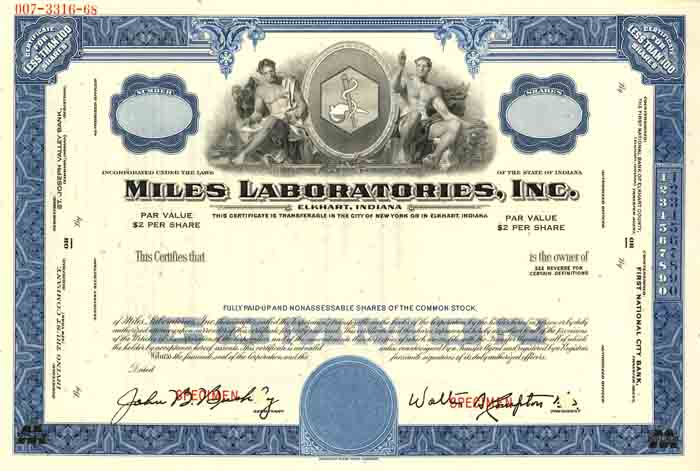
American Bank Note Company. Stock Certificate of Miles Laboratory.
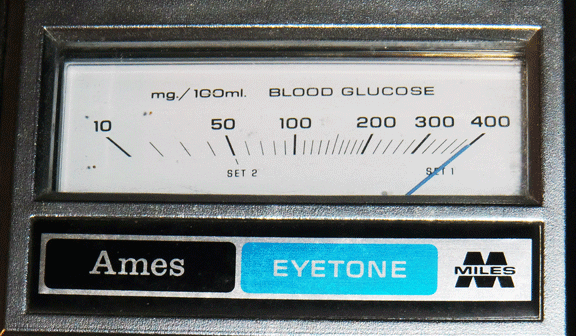
Ames Reflectance Meter, Photo Courtesy of diaTribe News. 2016
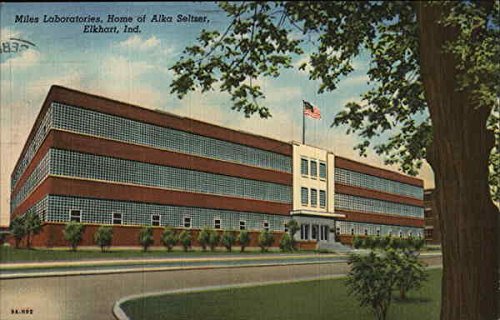
A.D. Frank News Company. Miles Laboratories Elkhart, Indiana. Aug. 27 1946

Annual Report of Miles Laboratories Inc., 1969. Photograph. From: Mendosa, Daivd. “History of Blood Glucose Meters: Transcripts of Interviews”. Mendosa.com. David Mendosa, February 15, 2006, http://www.mendosa.com/history.htm.

Clarke, S.F. and J.R. Foster. “A history of blood glucose meters and their role in self-monitoring of diabetes mellitus”. British Journal of Biomedical Science 69, no. 2 (2012): 83.
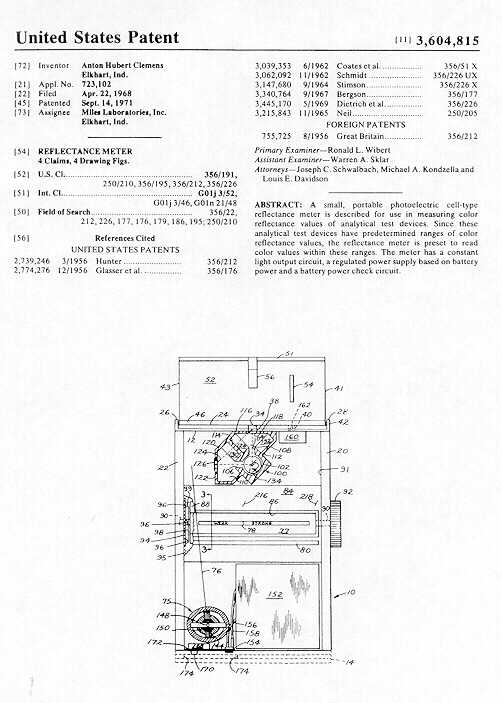
Clemens, Anton. Blood Glucose Control Apparatus. US Patent 4,151,845 filed November 25, 1977 and issued May 1, 1979. https://patentimages.storage.googleapis.com/73/5d/b2/7092e47efb73ca/US4151845.pdf
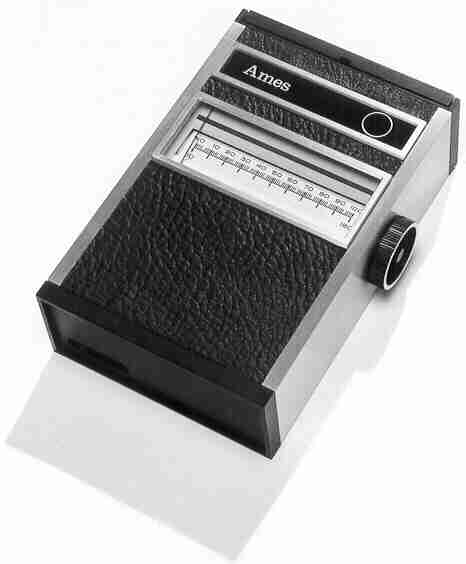
Clemens, Anton. Photograph. From: Mendosa, Daivd. “History of Blood Glucose Meters: Transcripts of Interviews”. Mendosa.com. David Mendosa, February 15, 2006, http://www.mendosa.com/history.htm.
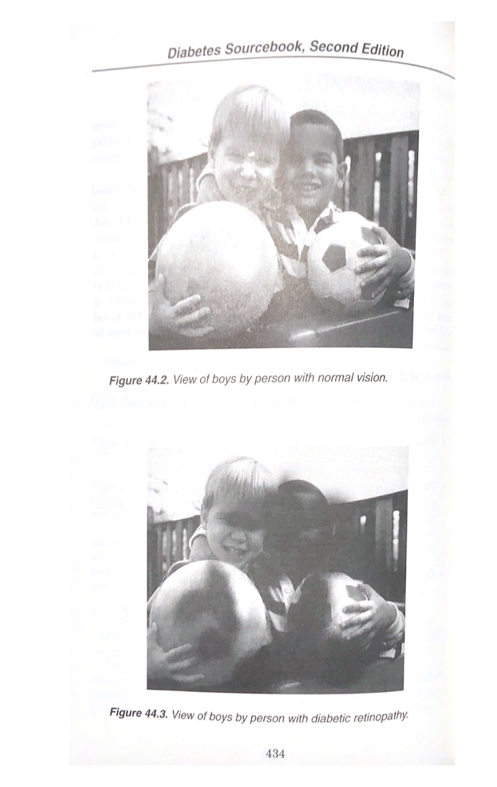
Bellenir, Karen. Diabetes Sourcebook. Michigan: Omnigraphics, Inc., 1999, 434.

Hillson, Rowan. Practical Diabetes Care. New York: Oxford University Press, 1996, 54.

Tattersall, Robert. Diabetes: The Biography. England: Oxford University, 2009, 163.

Tattersall, Robert. Diabetes: The Biography. England: Oxford University, 2009, 13.

Tattersall, Robert. Diabetes: The Biography. England: Oxford University, 2009, 75.

Tattersall, Robert. Diabetes: The Biography. England: Oxford University, 2009, 96.
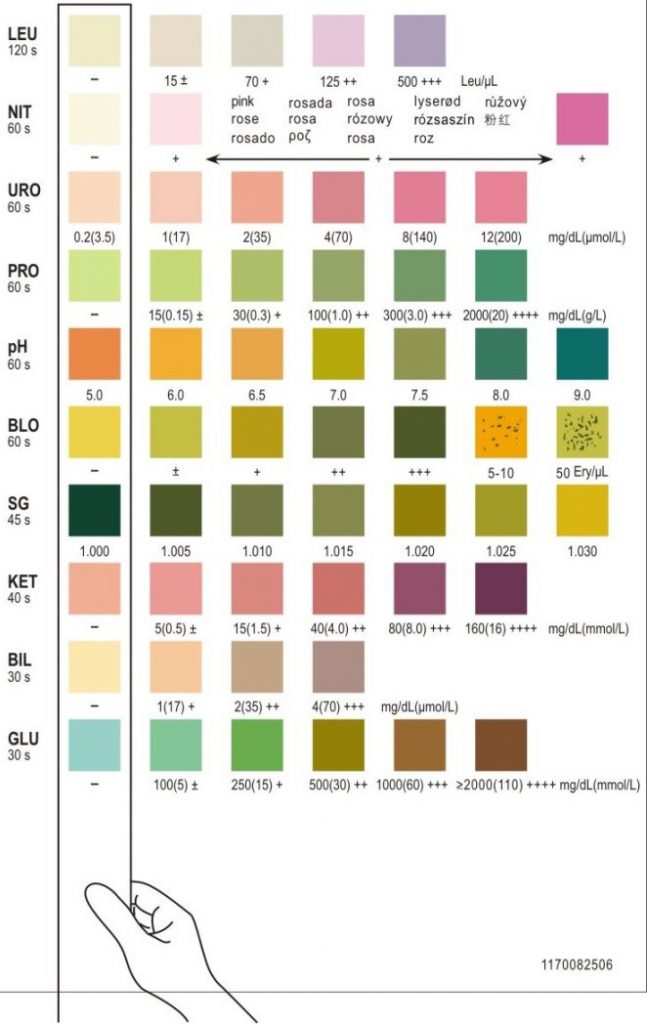
Urine Reagent Strips Results. Acon Laboratories, Inc. 2017
https://www.medscape.org/viewarticle/460365_2
Sensors in Medicine and Health Care, edited by P. Ake Oberg, Tatsuo Togawa, Francis A.
Biosensors for Monitoring Glucose, J.D. Newman and A.P.F. Turner pg 45